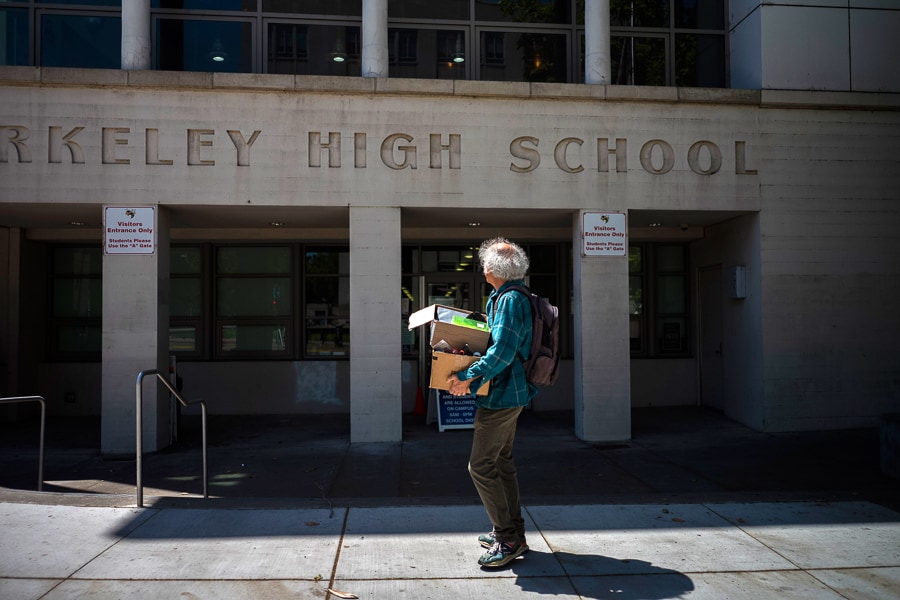
The pandemic crushed teachers. After Uvalde, they wonder 'what's more?'
Schools had gotten off to a promising start—classrooms open, vaccines widely available, learning underway. And while some enjoyed normalcy, others found that this year being among their most difficult. For some, the news that 19 children and two teachers were shot to death at an elementary school in Texas was a final gut punch
 Dan Plonsey, a math teacher at Berkeley High Scholl, packs up after the end of the school year at Berkeley, Calif., on June 4, 2022. Plonsey canceled final exams and called in sick last week after a student was arrested in what the authorities described as a plot to attack the high school. (Brian L. Frank/The New York Times)
Dan Plonsey, a math teacher at Berkeley High Scholl, packs up after the end of the school year at Berkeley, Calif., on June 4, 2022. Plonsey canceled final exams and called in sick last week after a student was arrested in what the authorities described as a plot to attack the high school. (Brian L. Frank/The New York Times)
On the day that a gunman walked into an elementary school in Uvalde, Texas, and carried out the deadliest school shooting this country has seen in a decade, an English teacher in St. Augustine, Florida, was on her lunch break, watching online as her local school board meeting erupted into an agitated fight over library books.
In suburban Dallas, a teacher was at the end of her rope after what she said had been her hardest year in almost two decades in the classroom. Even as the second semester drew to a close, many of her students, 10 and 11 years old, still needed instructions for basic tasks, and some were routinely absent altogether.
And in the Atlanta area, a 31-year-old teacher went to bed worried. Would her elementary school be next? Just before falling asleep, her husband promised that, should the worst happen, he would take care of their 2-year-old son.
Across the country, teachers have limped to the end of this school year, weighed down by pressures that were accumulating even before the Uvalde shooting last month.
Schools had gotten off to a promising start — classrooms open, vaccines more widely available, learning underway. And while some teachers enjoyed relative normalcy for the first time since the pandemic began, others found that this year ended up being among their most difficult.
©2019 New York Times News Service







